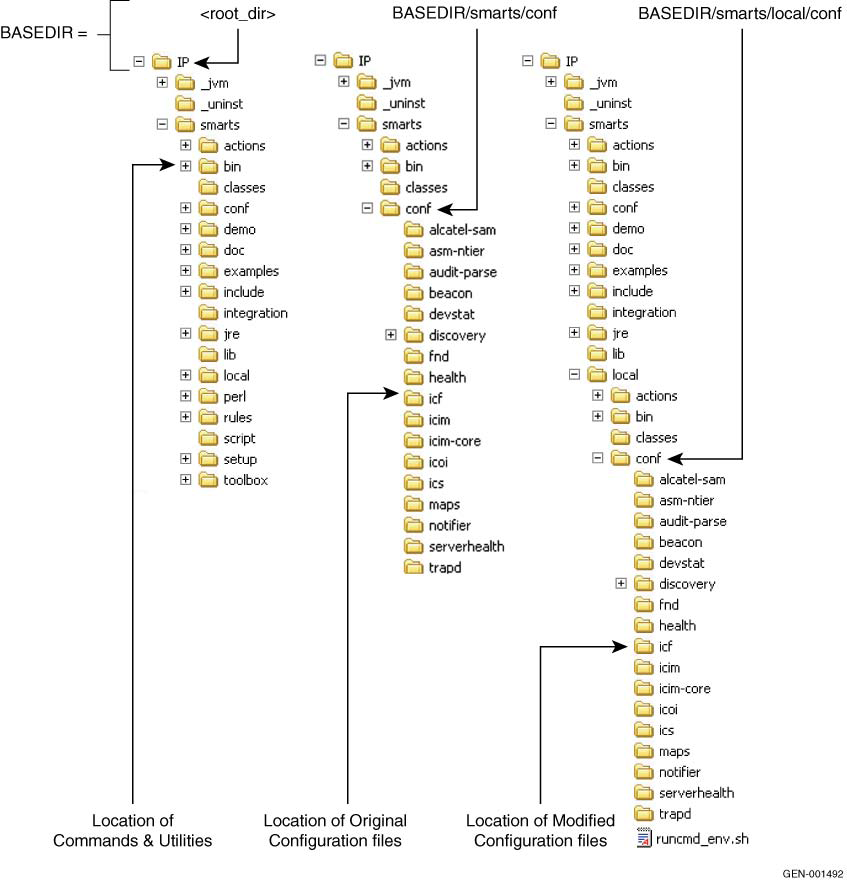provides the sm_edit utility to ensure that modified files are always saved to the appropriate local area, and that original copies of the files remain unchanged. Preview of how the sm_edit utility works previews the operation of the sm_edit utility.

All product suites use the same basic installation directory structure that is shown in Figure 8 on page 27.
To invoke the sm_edit utility,
-
Navigate to BASEDIR/smarts/bin directory.
-
In the command line, specify the path and the name of the file, relative to the BASEDIR/smarts directory, that you want to edit. For example,
sm_edit conf/discovery/discovery.conf
-
Modify and save the discovery.conf file. The sm_edit utility saves the modified version of the file to the BASEDIR/smarts/local/conf/discovery directory.
You can use the sm_edit utility to edit any text file, not just a configuration file, in the BASEDIR/smarts or BASEDIR/smarts/local directory. Because sm_edit assumes a starting point of BASEDIR/smarts, the text-file path that you specify begins with the directory name (conf, rules, script, and so on) under the BASEDIR/smarts directory.
Note:Original versions of files may be changed, updated, or moved as part of an software upgrade. The new patch files from the upgrade are written to BASEDIR/smarts/local directory and the unchanged patch files are removed. All files that contain custom modifications are moved to BASEDIR/smarts/.local.bkp.<version>
The System Administration Guide provides additional information about the sm_edit utility.